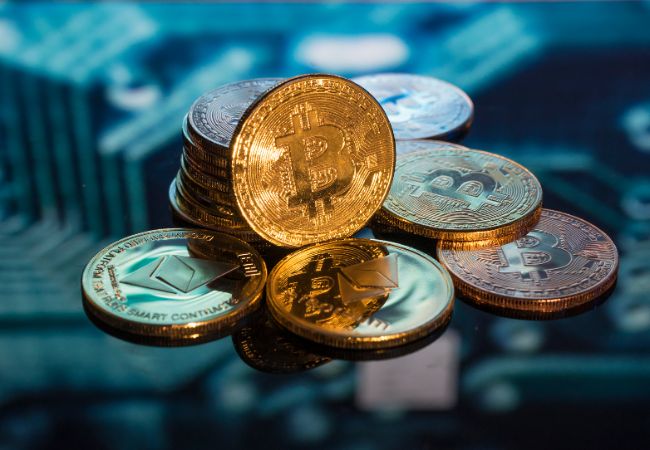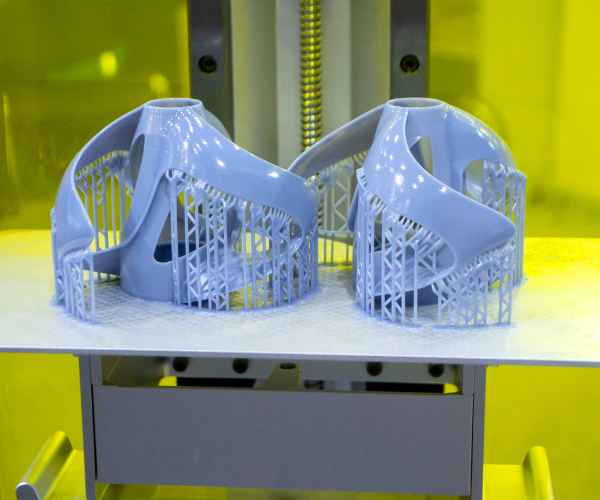Crypto art can be defined as the combination of traditional art with blockchain technology. While traditional art has the freedom to be copied and distributed without any form of restriction, crypto art makes use of the blockchain network to create NFTs. These NFTs will serve as a guarantee that a certain piece of art has a distinct and original owner, thus, revolutionizing the world of digital art.
The emergence of this new form of art has not only caused an uproar in the art market but also created waves in the traditional realm of art. It reshapes the perspectives of how art is owned and shared and offers a new angle from where the digital component of the art possesses value. A report published by NonFungible.com in 2021 has stated that the international NFT trade volume recorded $2 billion in the first quarter of the year demonstrating a drastic change in the market which favors blockchain based art services.
This article seeks to explore the following areas:
Crypto Art Simplified: Illustrate the nitty-gritties of the process and elaborate on it.
Creating NFT Art: Stepwise guide for interested people who want to make NFT.
Digital Wallets & Cryptocurrency: The use of both technologies in the buying, trading and owning of crypto art will be assessed.

What Exactly Is Crypto Art?
Crypto art is a blockchain-based artwork that is unique than the rest, as it is affordably authenticated and represented through non-fungible tokens (NFTs). As these tokens are digitally certified, each piece of the artwork has been given an identity that cannot be altered in any way. These creations have become famous on the Ethereum blockchain, allowing for the minting of NFTs using the ERC-721 and ERC-1155 standards. Each artwork that is tokenized is kept on a public ledger, which makes it impossible to question or hide who owns the piece of art.
How does Crypto Art differ from the Digital Art we traditionally know?
The areas of difference between the two concepts revolve around three main features – Ownership, Tokenization, and Marketplaces.
Ownership: Crypto art is built on a blockchain basis and as such facilities ownership verification, something that cannot be found in the traditional digital art space. Thanks to this tokenization, it is ensured that even though a particular digital file is likely to be duplicated, no one can ever forge the ownership of the original.
Tokenization: Crypto art can be said to be a digitized version of an art file that transforms into a token with the use of blockchain, however, a traditionally known digital art file is most of the time just a command file that has no creativity attached. When it comes to crypto art, it requires expanded effort as the digital assets created are fungible and non fungible.
Marketplaces – Crypto art has replaced traditional methods of exhibiting art through galleries and personal websites as it is now sold at open source market places like OpenSea, Rarible and Nifty Gateway. Such platforms facilitate the sale of artwork while also keeping a history of previous sales pertaining to the artwork.
Who are the notable figures, and what sales define the NFT marketplaces?
Ample crypto artists and some sales are now regarded as the face of the movement dominated by crypto art. The sale of Mike Winkelmann’s artwork, christened “Everyday: The First 5000 Days,” for a whopping $69 million at Christies is sure to turn heads. This sale gave the title of the highest mint ever sold to an NFT, and hoisted Beeple’s name into the top three most valued living artists.
In the same category lies CryptoPunks, an initiative by Larva Labs that comprises 10,000 computer generated random characters. The project was sold for $7.5 million, making it abundantly evident that there exists an interested group ready to buy crypto art at an around immense market value. Together with this, the stable refinement and over the top development of the crypto art market can be witnessed.
The process of making a crypto art can be summarized in three steps, They include the tools that one uses, the process of how one creates the art, and finally how the art is put on the blockchain. Concerning tools, gimp and blender alongside photoshop are great tools for artists to first make their digital piece, afterwards there are various platforms such as OpenSea, Rarible and Mintable that allow one to upload their work. All of these platforms provide an easy interface to the artists allowing them an NFT creation process with ease. On the other hand, ethereal acts as a way to support non-fungible tokens making it more accesible to the mass. With the development of a community, Ethereum saw a wider use case, according to a study done by the university of Zurich in 2021, the majority of NFT transactions were and are still majorly done on the ethereum network due to the extensive community built tools it provided. All in all owing to the vast artistic I’m wanting to do, the tools mentioned above operate perfectly fine to allow me to cut down cost and make the operational processes smoother.
How Should Creators Create Digital Art That Fans?
Guidance on Designing the Artwork
Redesigning art so that it would stand out in the digital world is not only about creative skill but a good understanding of the current digital audience. Some popular topics include:
Cultures Cybermeric and Anarn:- these topics always tend to be quite popular in the digital art world as they do possess an appealing and futuristic element to them.
Art Able and Generative: these are more of an artistic approach but involve the use of codes to create designs that are different from the norm
Cultural Statements: Their art criticizes issues on society, technology and oh yes, humanity
Case in point Pak’s “The Merge” which was on sale for several owners, for about $ 91 million in sales. That goes a long way to show the opportunities that exist within the conceptual and even more so, abstract digital art, is a popular example of the ideas listed above.
What Are The Steps To Minting Digital Art And Selling As An NTF?
Steps to Minting Art on the Ethereus Blockchain On Minting:
Minting art as a non-fungible token is an important process that converts a digital file into an asset that can be sold. The final steps usually happen as follows.
Preparing Your Artworks: It is vital that your digital artwork has been finalized and stored in an appropriate file like, PNG or GIF.
Choosing a Platform: Pick a platform like OpenSea that doesn’t require any configuration of the blockchain on your end.
Creating a Digital Wallet: Create a wallet on for eg MetaMask or a Coinbase wallet for the purpose of connecting to Ethereum.
Uploading And Minting The Collectible: Upload your FiberMax’s artwork or images to the marketplace, add the title, write a short description, and type in the properties of your choice and finally mint the NFT. During this process, a smart contract is created, which is a self-executing contract with the terms of the agreement written into code.
Creating An Auction Or Fixing The Price: Choose if you want to create an auction or a fixed price for the sale.
Gas Fees: This is the price needed to carry out any activity in the Ethereum network including the minting of the NFTs. It is determined by the level of congestion in the network. For example, during the peak hours of business activity there is an increase in fees, as was the case in May 2021 when gas fees surged to an average of $70 per transaction.
What strategies can artists use to monetize their artwork in the crypto art space? Artists can create limited editions of their work, driving demand and increasing the value of their creations. But let’s first break it down in simpler terms.
How do price fluctuations and trends impact staking in NFT marketplaces?
Marketplaces in the NFT space have been experiencing rapid growth recently, with a 62% increase in sales last year according to the Non-fungible report, and as the crypto art movement continues to pick up traction, NFTs have been in hot demand. The total market cap of NFTs sold last year was a staggering $17 billion, a measly $250 million in 2020.
What are the market metrics for crypto art and how does the movement impact animators around the world? There’s no denying that crypto art has practically taken over the internet, especially with Binance seeing a prominent increase in interest in April 2021, leaving more and more people optimistic about stakable tokens being the perfect investment opportunity.
How did this spike come into being? As trends started taking shape on social media platforms such as Instagram, Twitter, and TikTok, and influencers hopped on the bandwagon to ensure eyeballs were glued to their brands, true adoption of NFTs began. Counter intuitively, as investors consider crypto to be a volatile investment, speculators pump meaningfully, will essentially drop the hype, with Dorseys bidding hitting the 2.9 million dollar mark for a tweet.
And while this volatility would leave investors on a high, since everything is relative in the capitalistic world, even the global demand for products in the scene, would leave collectors more focused on actively trading their assets meaning a target changing every so often. Indeed, art inflation does warrant high profit margins and creates the hope of lower prices and higher margins.
Royalties. With NFT artists getting a percentage with every resale of their art, the smart contracts ensure that they continue earning money with every passes of their art.
Engagement. Artists that put effort into connecting with their audiences through social media or their digital galleries usually have more interest in and value for their art.
Artists such as Beeple, who sold his piece for $69 million and Grimes, who sold approximately $6 million worth of digital art in about 20 minutes at Nifty gateway exemplify successful monetization.
Who are the artists thriving in the NFT art space?
There are many success stories in the field inclusive of the Crypto art that have great earning potentials. Some of them talk about:
Pak became global news with the sale of an NFT called The Merge for $91.8 million to a group of collectors, this gave an all time high for the digital arts.
Pak: An 18-year-old artist made more than $17million in NFT sales after fusing bright emotional art with great tales.
What Are the Legal Considerations and Challenges in Crypto Art?
The legal framework of crypto art encompasses specific challenges and legal considerations such as intellectual property and technology that is always changing.
What Are The Intellectual Property Issues With Crypto Art and Digital Assets?
When it comes to the concern of intellectual property, the nature of crypto art becomes borderline problematic for artists. It is necessary for creators to make sure that they possess the rights to the digital asset they intend to tokenize, especially when parts of pre existing artworks are licensed into it. Furthermore, the buyers also have to keep in mind that they do not automatically acquire copyright of the digital art by just possessing an NFT. An NFT itself is a unique digital asset in the form of a token so they only acquire that part.
So long as copyright infringement is concerned, the works done without a proper license incur legal vulnerabilities due to the infringement. There has been one case where a group of artists have sued a top NFT marketplace for allegedly permitting the sales of pirated of their creations.
What Are The Issues With Designed Crypto Art, But There Are Market Volatility And Technology Challenges As The Situation Is Now?
Here’s a compiled list of issues faced by artist regarding these designed crypto art pieces for the crypto art market:
Market Volatility: Due to various factors such as market trends, external economic conditions and investor sentiment where NFT prices tend to oscillate quite a lot.
Technology Issues: Not every artist is tech savvy and for those who aren’t, creating NFTs and adjusting to the different platforms can be a real hassle.
What Future Predictions Do You Have Concerning the Regulation of Crypto Art Creators and Collectors?
The regulatory framework of crypto art is something that is still in the process of being developed. Predictions indicate that governments and regulatory bodies may soon implement stricter guidelines concerning the sale and transfer of NFTs, with consumerism and anti-money laundering being the focus. Artists and collectors may need to brace themselves for some potential alterations that can influence the processes of creation, sale, and taxation of NFTs.
Frequently Asked Questions
How Is Crypto Art Different From Other Digital Art?
First and foremost Crypto art evolves from the same digital basis as other forms of digital art but the two will differ when it comes to the ownership of the pieces, the sale of the pieces and the ways that they can be verified.
Ownership and Verification: Crypto art makes use of blockchain technology to secure the authenticity of a specific copy of a specific artwork and issues it a unique NFT. This guarantees the uniqueness and ownership of the digital file. In regular digital art this layer of block chain verification is not present and the images can be reproduced without any record of ownership which can be traced.
Market and Trade: People can purchase and sell crypto art on NFT markets for example OpenSea, Rarible and Nifty Gateway as well as sell for crypto currency and other forms of currency. For regular digital art it is usually sold in online galleries or sites and most people purchase it in dollars.
According to ArtTactic’s 2021 research, a staggering 92% of digital artists assert that the use of blockchain aids in showing the ownership of their digital artworks, which shows the power and reproach of crypto art in protecting the rights and ownership of artists.
How Should I Go About Buying Crypto Art?
In order to buy, crypto art, follow the steps below:
Create a Digital Wallet: Create a crypto wallet (like MetaMask or Coinbase Wallet) and fund it. Make sure the wallet supports the blockchain where the art was minted (Usually Ethereum).
Pick a Marketplace: Go to an NFT Marketplace like OpenSea, Rarible, Nifty Gateway, etc.
Search and Buy Art: Select an artwork that you would like to buy. If you wish, you can also bid and buy at a set price.
Finalizing the Purchase: After doing so, transfer cryptocurrency from your wallet to the smart contract that the seller created and notice how it changes the NFT in the marketplace. This is usually the buying process on the marketplace.
Moreover, in 2021 the total reported trading volume on OpenSea reached over $3.4 billion which means that there are a lot of people willing to buy crypto art.
Is the creation and sale of cryptographic art worth pursuing as a business?
When considering selling and producing crypto art, one needs to keep in mind the many facets of selling and creating that art as it can be profitable based on one’s potential. Below are the aspects that determine the profit in this field:
Artist Archives: Creators that are well known or are prominent have better chances of making higher sales in comparison to others.
Quality and Technology: The creator’s art must be unique and resonate with the community, as with any reasonable marketing strategy, the prices would scale up.
Economics: Cryptographic art is no exception when we talk about market dynamics, just as every other commodity, crypto art’s price trends depend on overall economic trends, and market fluctuations.
A good example of this is Beeple’s sale of $69 million for one of his pieces, which is one of the highest prices for a single NFT on March 2021.
What Are The Dangers That Lie Ahead In Pursuing The Crypto Art Strategy?
Dealing with cryptography involves dealing with risks that are in abundance, and few of them are:
Cryptocurrency Fluctuation: There are periods where value dips take place or higher values are realized, to expect stability is not realistic.
Technical Factors: Smart contract failures and various other issues are in place which can bring extra risk and higher uncertainty to possibly both buyers and sellers.
Regulatory Climate: Due to the recent updates and changes in Blockchains various additions have been made to regulations such as changes in trading, taxation as well as legal acquisition of NFTs.
Rights Issues: The realm of intellectual property rights brings in more complexities as the buyer is not guaranteed the rights to the crypto art due to them purchasing the NFT.
Conclusion
In my opinion, crypto art is an interesting blend of art and technology. It changes everything about art including how we view, trade, and value it. As the market evolves, more and more creators and investors are encouraged to keep an eye on the ever volatile space. There will be plenty of opportunities but at the same time a certain level of caution needs to be executed.
What lies ahead for all us is the possibility of further innovation within the realms of crypto art. We’re probably going to see the integration of blockchain technologies for virtual reality purposes. Doing so is only going to increase the immersion and interactivity that is available within digital artworks. As we step into this side of the world, there are going to many different types of artists and collectors, and the future of the art world is going to be more vivid and explosive than ever before.
More Post
- Commercial vs Print Modeling: The Ultimate Guide to Understanding the Differences
- Grids in Design: 9 Grid Design Layouts
- Graphic Design Composition: Mastering the 10 Crucial Graphic Design Elements
- Finding Inspiration Through the Vibrant World of Color Mixing
- What does a stylist do? The Art of Transforming Appearance Through Fashion





